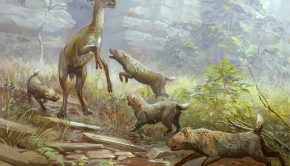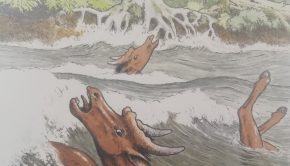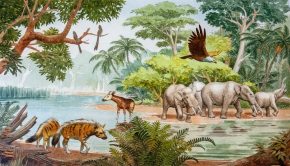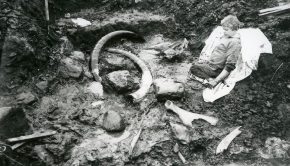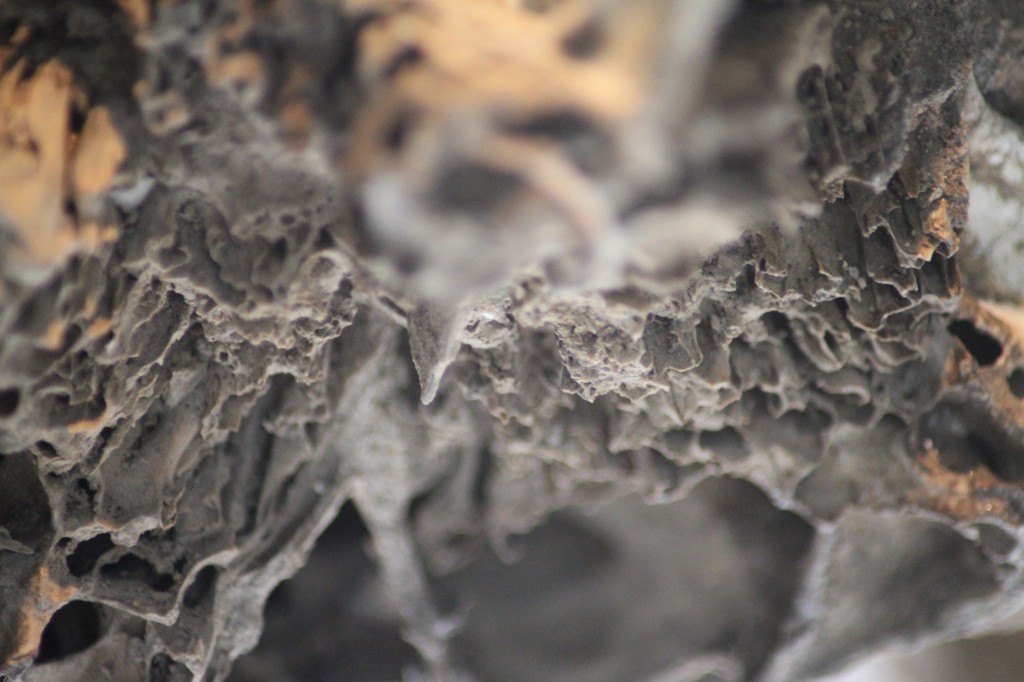Episode 162: Cerney Wick
Published on July 23rd, 2024 | by David Marshall
In the following years, the excavations at Cerney Wick expanded in scope into what is now the largest palaeontological dig in the UK. The potential for public interest in the site and its finds was quickly realised and the documentary ‘Attenborough and the Mammoth Graveyard‘ was produced by Windfall Films for the BBC in 2021. Now, as additional fossils are recovered and a deeper understanding of their depositional environment is gained, we are able to paint a progressively more detailed picture of this exciting locality.
A few videos have been selected as Patreon exclusives for two months after which they will become publicly available, so please check back soon. If you want immediate access to this content (and a whole lot more like it), then please consider signing up to support the show. We rely on your donations to buy our equipment and none of what we do would be possible without the support we receive from our backers. If you enjoy what we’ve done here, please consider where we might be able to take you next and how much more detail you’d see in 4K!
We were joined by both Sally and Nev as they discuss their mammoth discovery and introduce us to Cerney Wick. We examine the complex geology of the site, with its interplay of Jurassic and Pleistocene sediments, and look ahead to the 2024 field season. Finally, we reflect upon how the dig relies upon cooperation from the quarry’s commercial owners and the numerous volunteers required for the work.
Cerney Wick is the name of a commercial gravel quarry operated by Hills Quarry Products and located in Gloucestershire, England. It is situated within the Cotswolds Water Park, a series of lakes formed as a result of similar quarrying activity throughout the 20th Century.
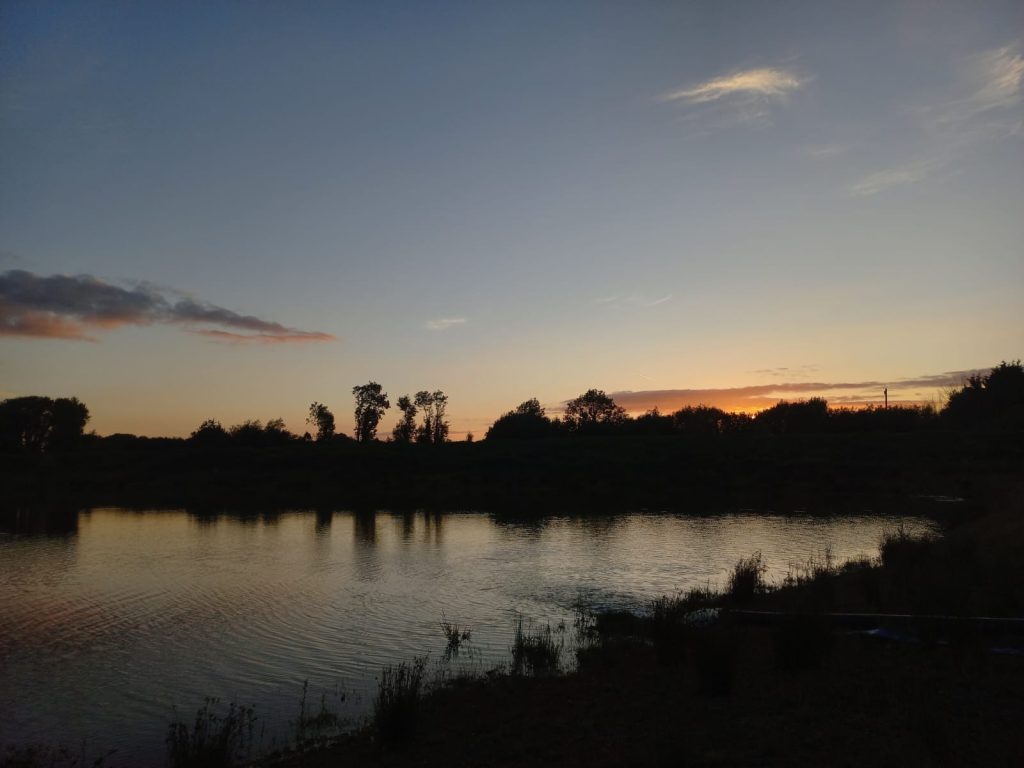
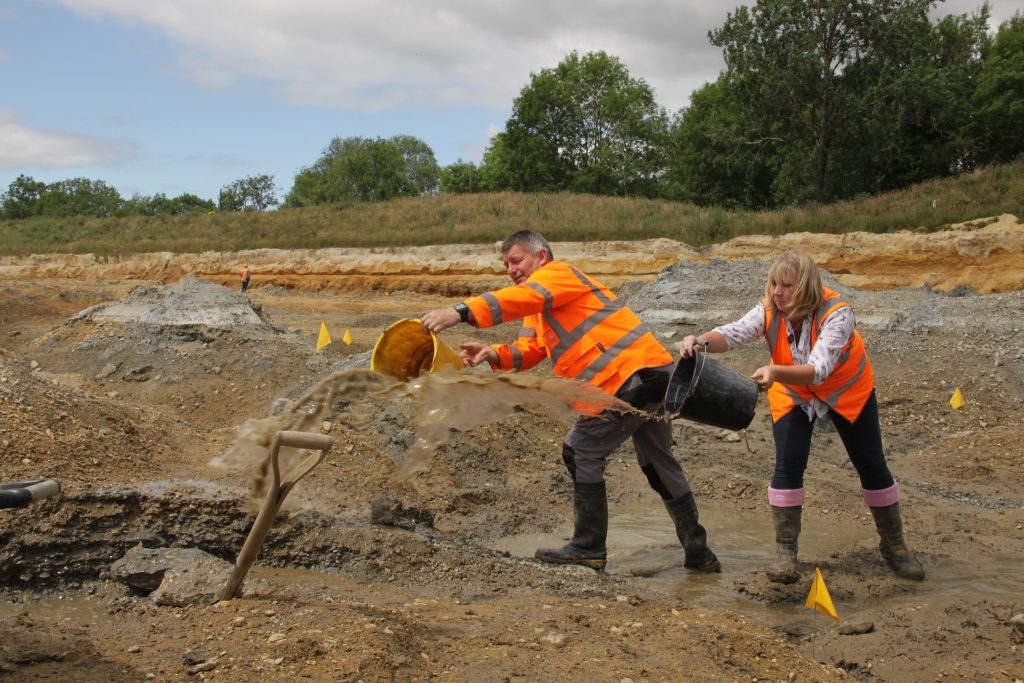
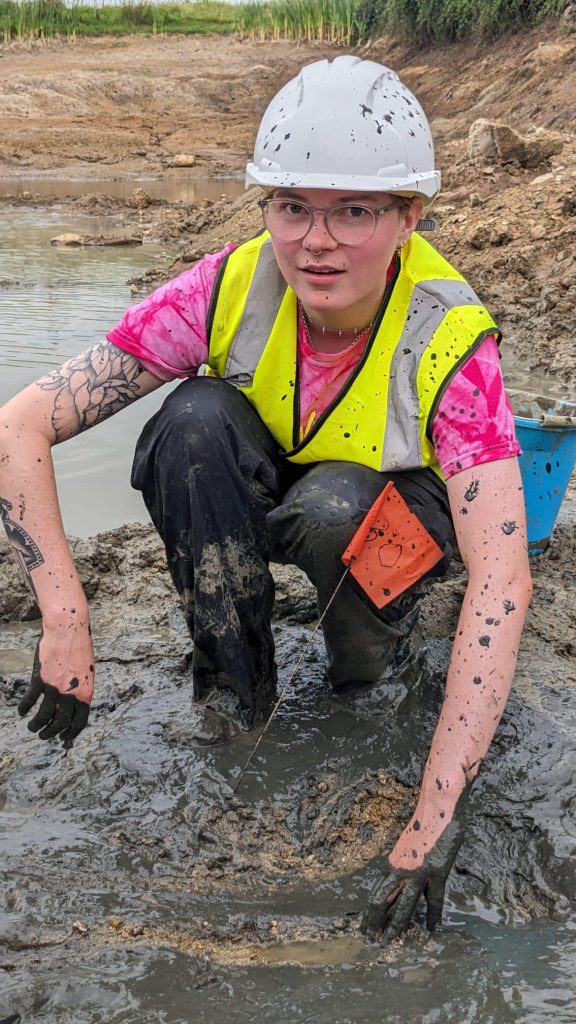
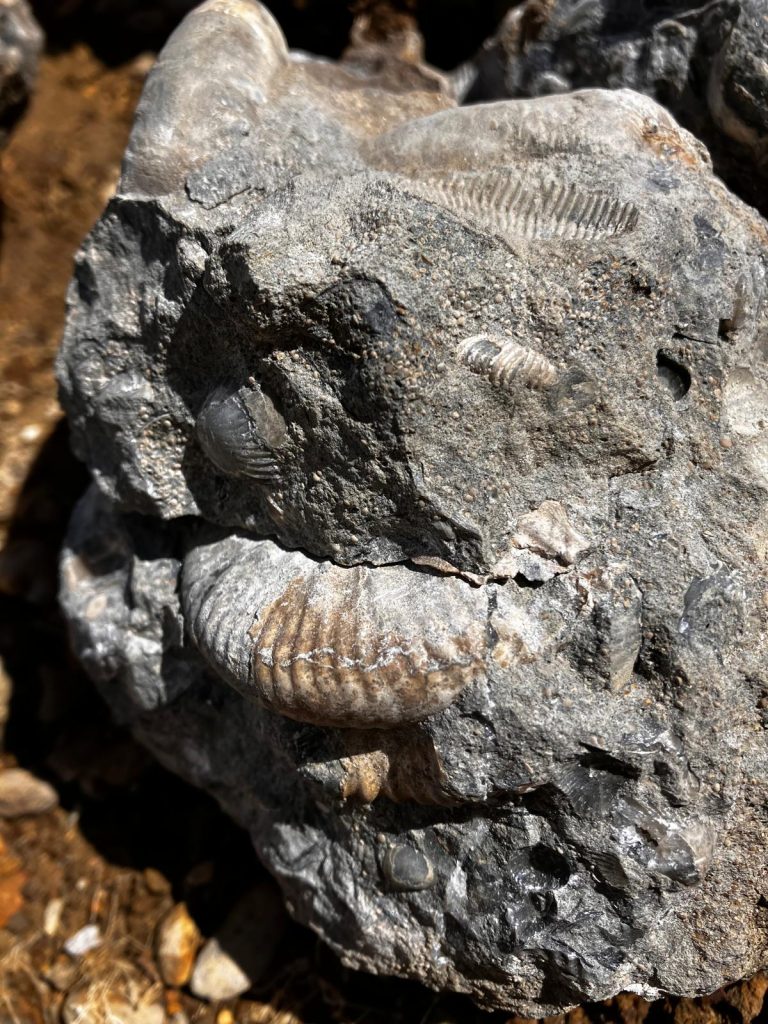
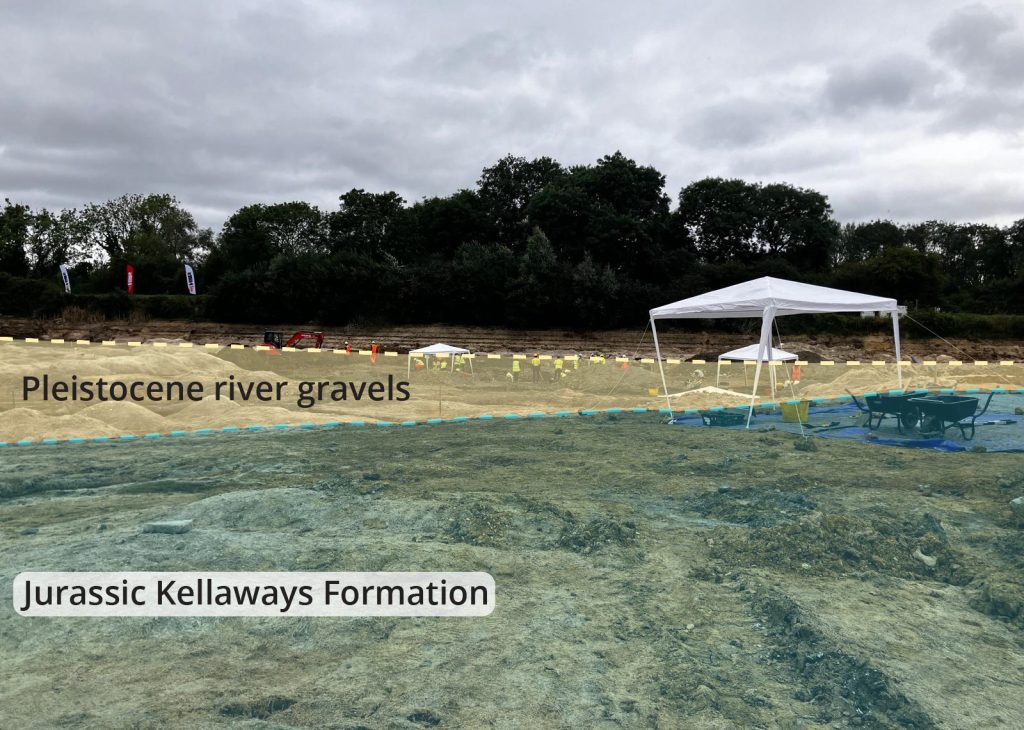
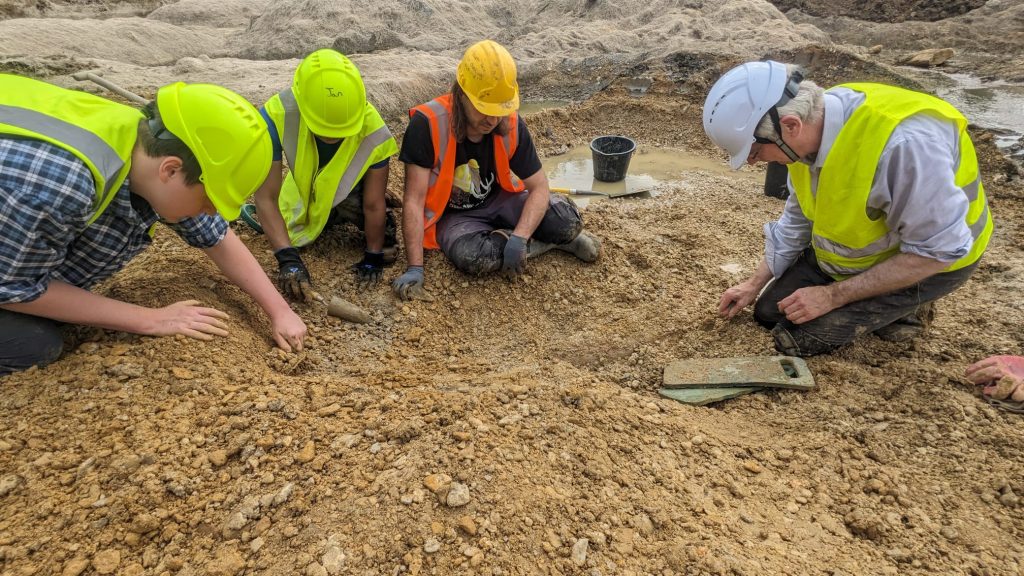
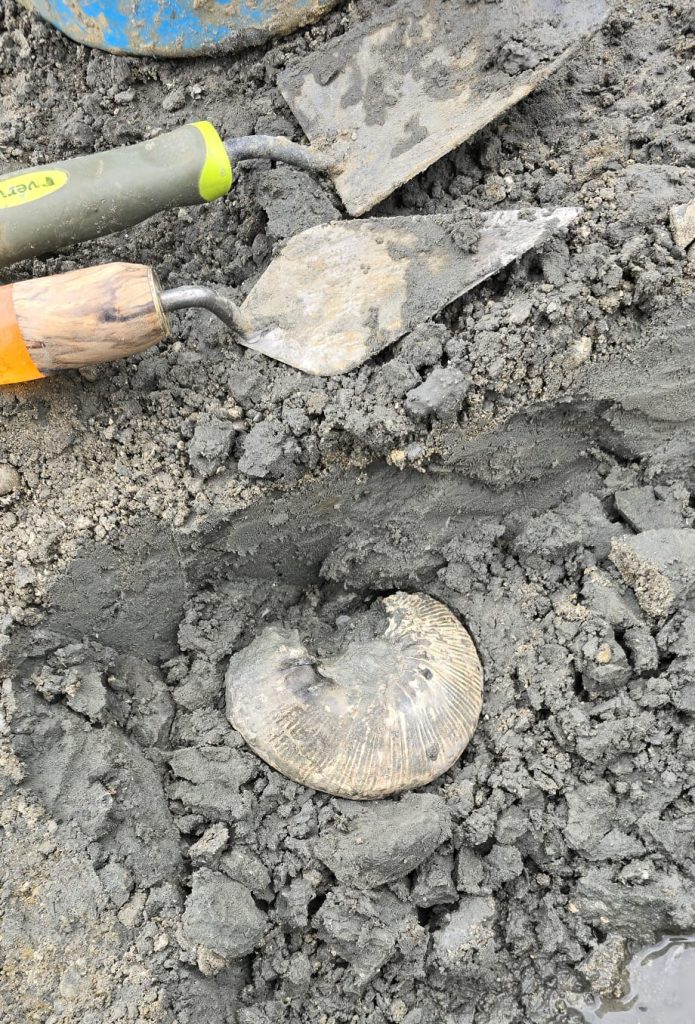
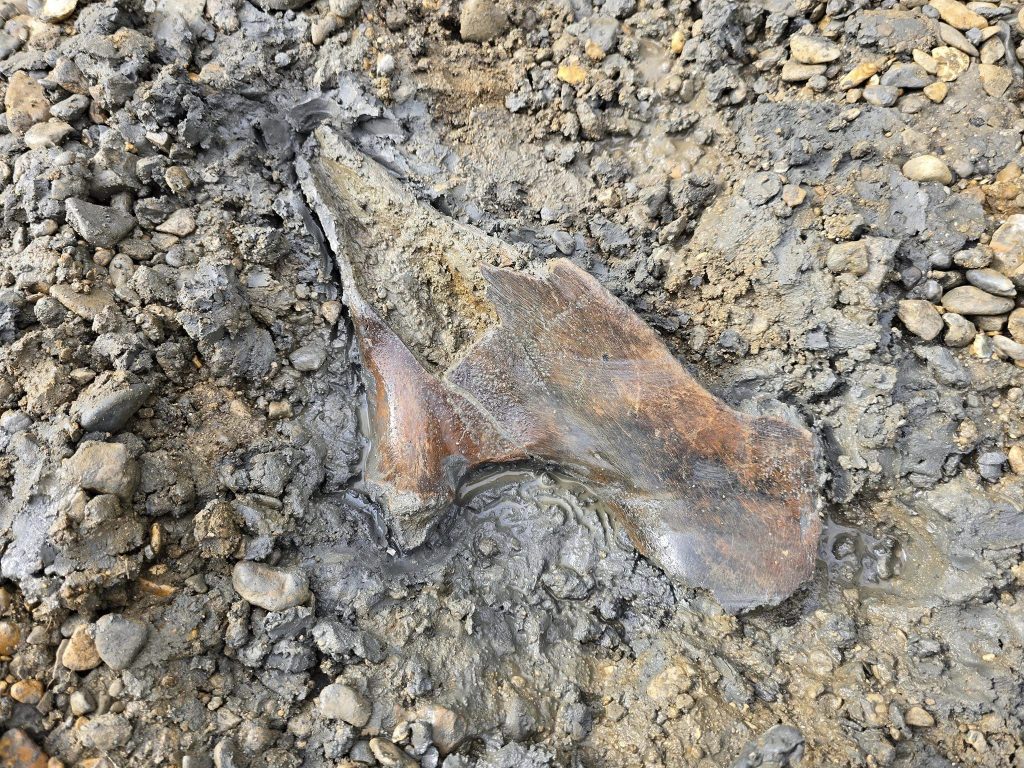
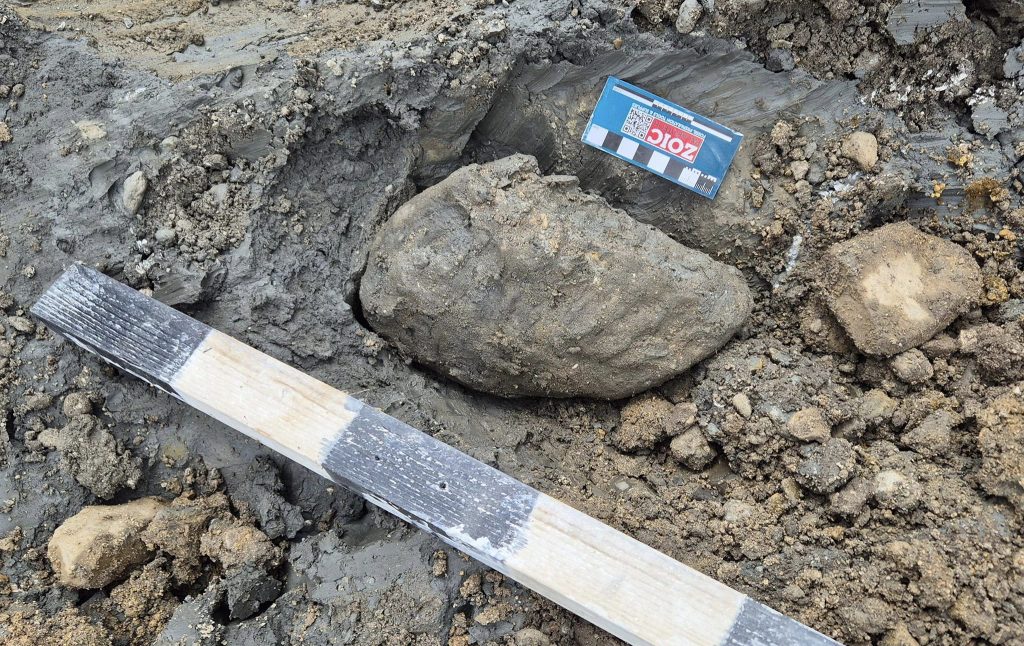
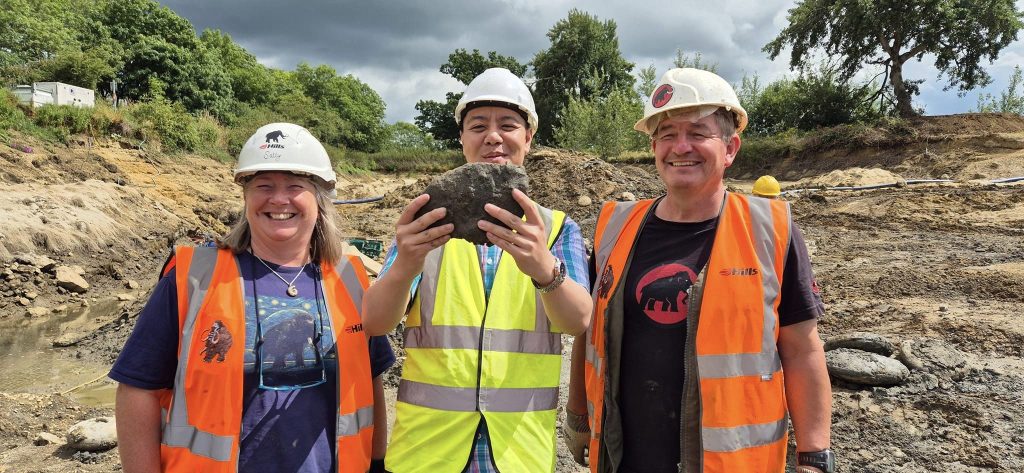
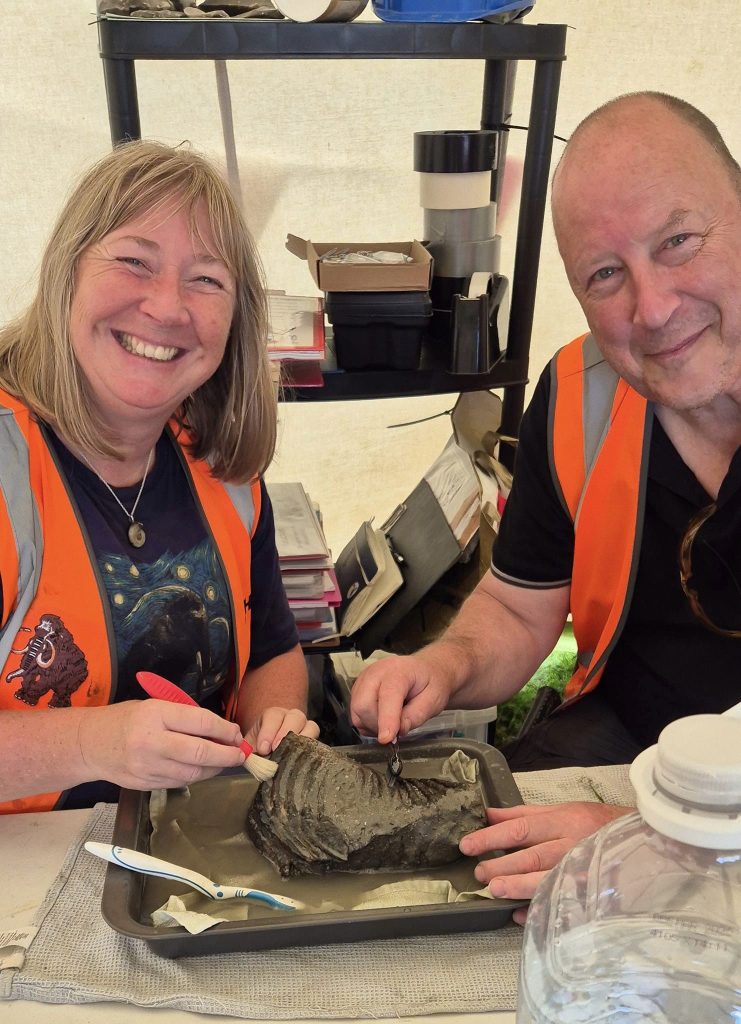
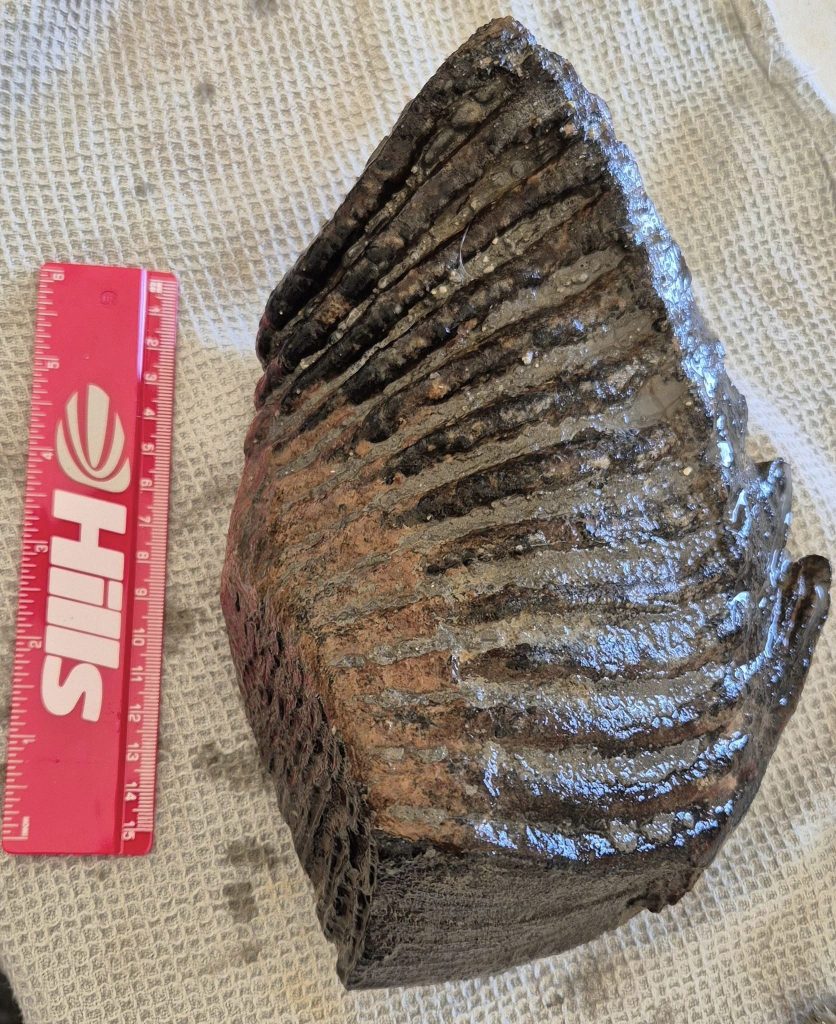
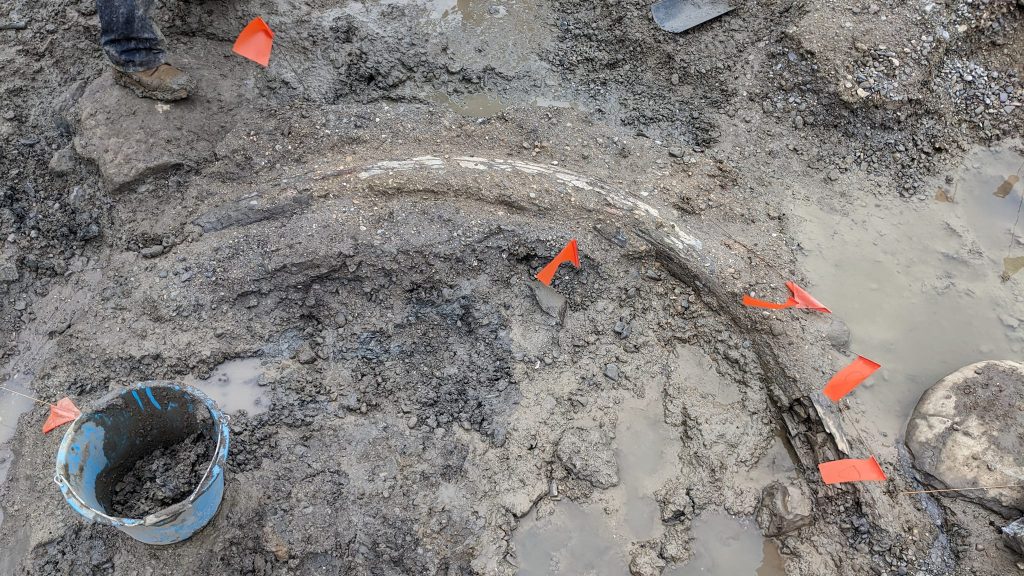
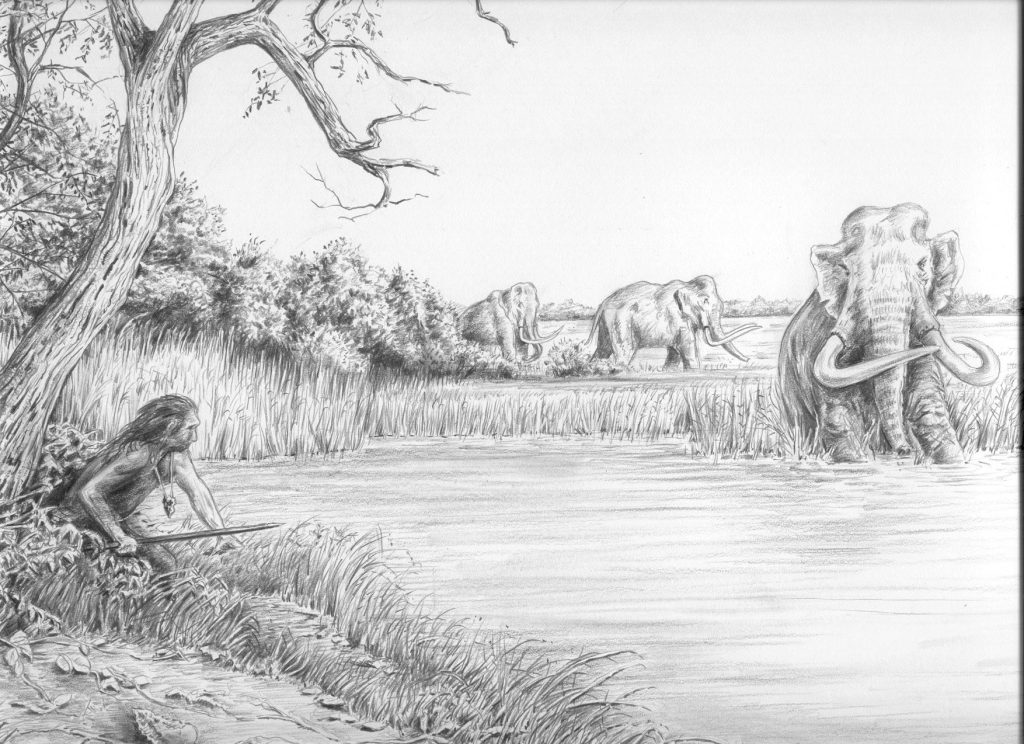
We arranged to get an exclusive tour of the site a few days before digging was due to begin, but why is this important?
Normally, the public only get to see the results of an excavation. Sometimes, they might even get to see part of the excavation itself. Rarely, however, does anyone get to see a site before ground is even broken!
In this video, we visit the site immediately after the water had been drained away. What does it look like? How much rock is visible? Which fossils can already be found? Dave even makes a significant discovery that becomes the first specimen of the 2024 dig!
This video is a Patreon exclusive. As an additional benefit to becoming a Patreon backer (Ordovician level and above), you will have the opportunity to actually win one of the ammonites you see being collected here!
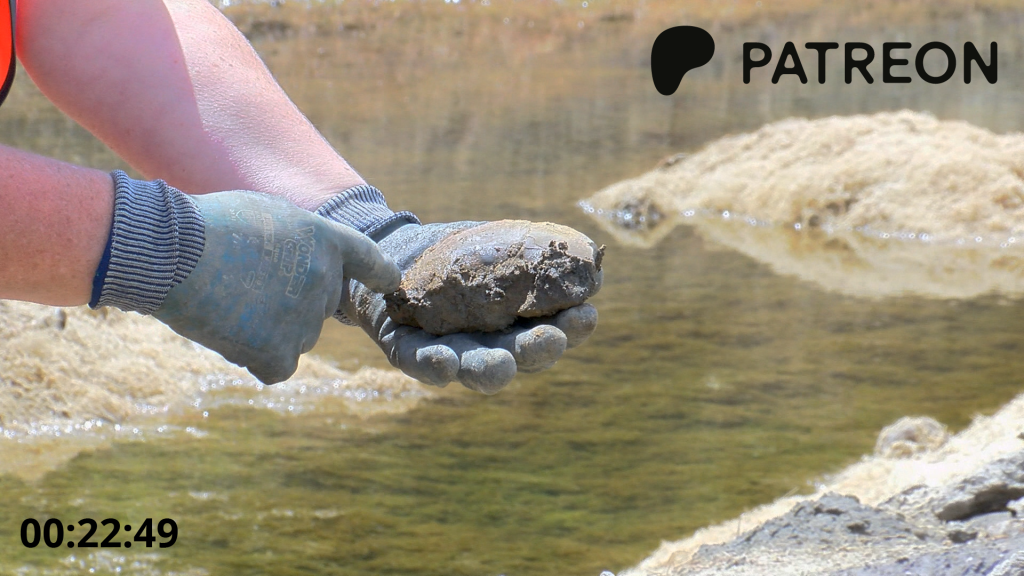
We returned to Cerney Wick on day eight of the dig. Camp had been set up, volunteers were on site and ground had been broken. Spectacular fossils had already been found by this point and it didn’t take long for new finds to start coming up right before our eyes!
We managed to record a huge amount of multimedia as we tried to capture as full a picture of the dig as possible. How did it all operate? Which activities/processes were happening on site? Which roles did the volunteers take on?
Of course, we did manage to see some pretty spectacular fossils being uncovered as well!
Note: Since this is a live dig, all the identifications made in the field should be taken as preliminary. As specimens are excavated, cleaned and analysed, more information becomes available and it is not uncommon for the interpretation of a fossil to change throughout this process. This is all part of the scientific process, something that is not often shown.
Ice Age finds
The Pleistocene mammoth remains are probably the most iconic things to come out of Cerney Wick, they’re not the whole story; a rich fauna including bison, horse, hyaena, wolves and even rhinos have also been recovered from the site. Whilst there were enough finds that we could have spent our entire time filming the excavation of this material, we instead wanted to focus on giving you the experience of being at the dig yourself.
All that said, there is still plenty of opportunity to see many of these fossils throughout the content we’ve produced. Many of the fossils shown in this section reappear in the conservation tent later in the day.
Jurassic finds
Though the fossils of the Kellaways formation might not attract the attention of the TV cameras, they are still highly significant in their own right and were no less a part of this dig than the Pleistocene material. There are still a lot of unanswered questions about the Kellaways formation and new discoveries, such as those below, just keep adding to our understanding of these Jurassic seas.
An extended version of this video (00:09:40) is available on Patreon.
Volunteer roles
Volunteering at a excavation of this scale is not just limited to digging; there are a huge number of diverse roles from operating a drone or a digger, to recording finds with GPS or photogrammetry. Each volunteer brings with them their own skills and so there is always something to learn from someone else. The learning isn’t just confined to the digging either, in the evenings the volunteers would give each other lectures about their specialist areas and included everything from plesiosaurs to flint knapping.
Conservation
The discovery and extraction of a fossil is only just the start of its journey. If you want a fossil to remain intact, then it is probably going to need some kind of conservation. This is definitely the case for the bones discovered at Cerney Wick which start drying out as soon as they are exposed to the air. This material needs immediate treatment and it’s for that reason that there is a conservation team on site working to rapidly clean and stabilise material as it comes out of the ground.
In this section we follow some of the prep process for the Pleistocene material, taking bones from the dig site through the conservation tent and seeing what new details emerge as we clean up the specimens.
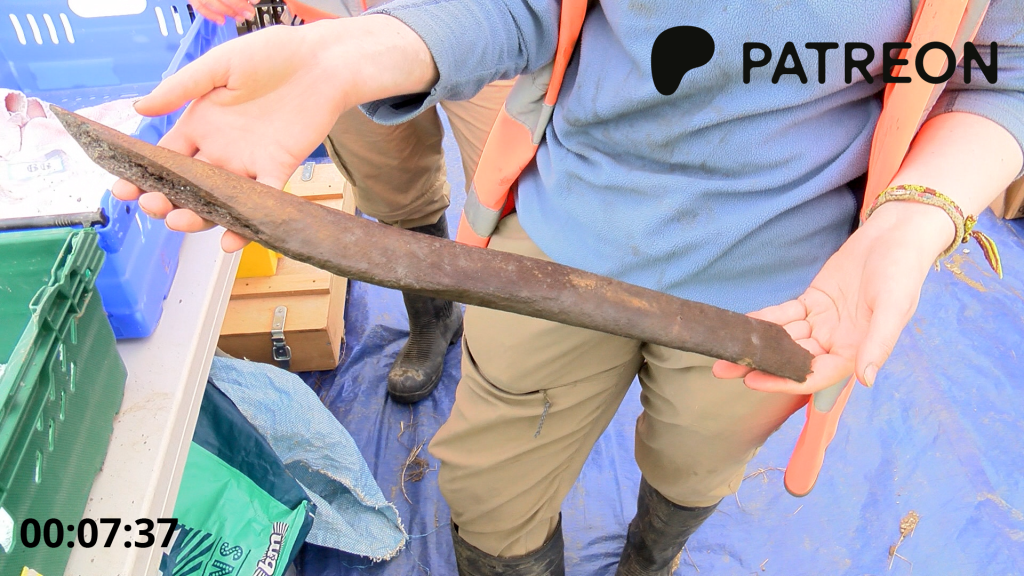
We’re given a guided tour of the conservation tent where we’re shown what the team is currently working on and we reunite with some of the bones we saw being excavated a little earlier.
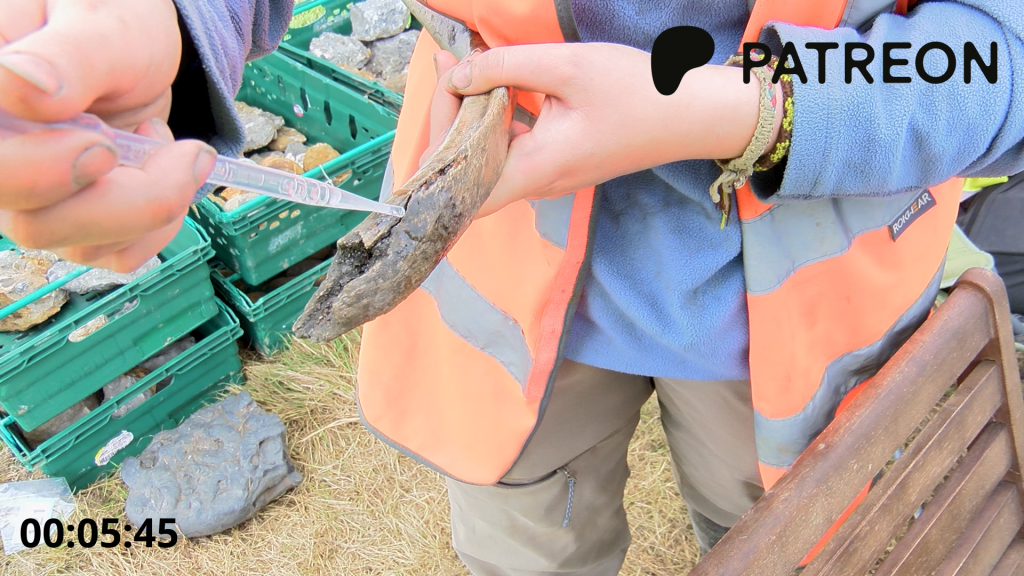
We are then introduced to Paraloid B72: the reversible glue that’s routinely used in fossil preparation.
An extended version of this video (00:04:00) is available on Patreon.
Stone tools
Some of the most significant finds from the site have been those that demonstrate that humans and Pleistocene megafauna were inhabiting this area at the same time. Stone tools such as Neanderthal hand axes have been found on site and this year’s dig got off to a flying start with the discovery of another specimen on the very first day!
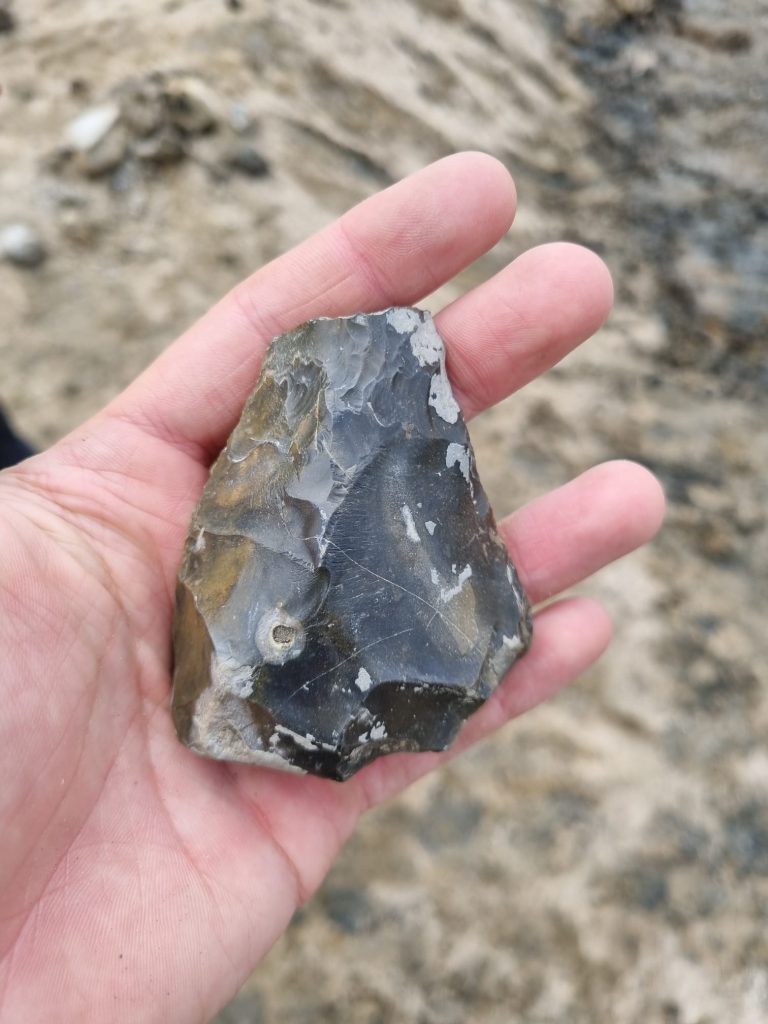
We returned to Cerney Wick on the final day of digging. This was the last opportunity to get specimens out of the ground before the site was left to fill up with water for another year (at least). Many difficult decisions had to be made about what to extract, what to leave behind and whether any more new ground should be explored at all!
Again, we saw some amazing specimens come out of the ground and actually got a chance to go into a lot more detail about fossil conservation and preparation. Dave managed to find his own mammoth bone* live on camera and we revealed some of the most beautiful ammonites.
We end our time in the field with a couple of interviews looking back at what’s happened over the last few weeks.
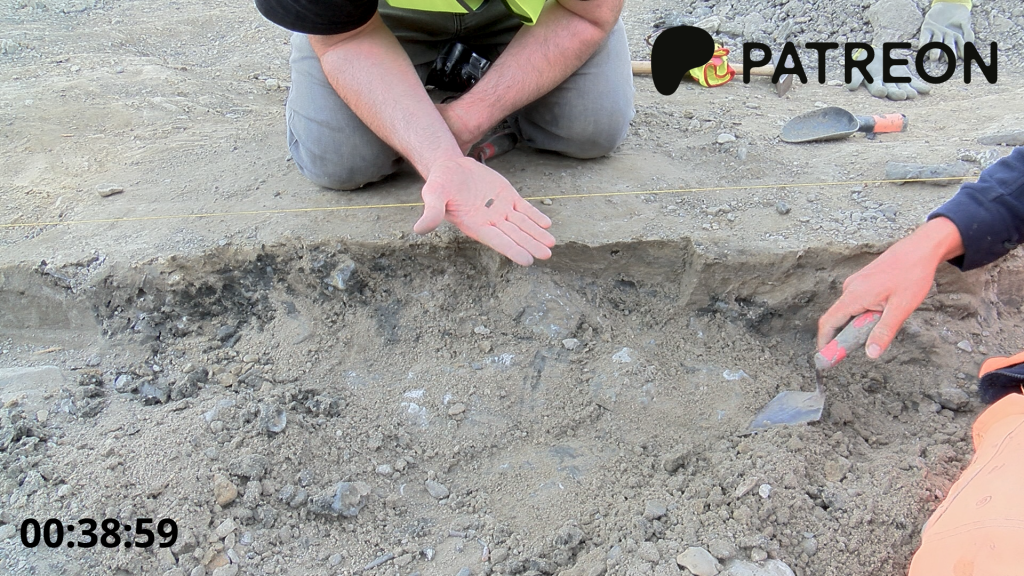
Whilst it was an incredibly busy day for everyone on site, Kieran still took the time to show us how archaeological digs are conducted systematically. Having swapped his hammer for a trowel, Dave made the discovery of a mammoth bone* live on camera.
*Yes, that’s what I’m claiming as a mammoth bone.
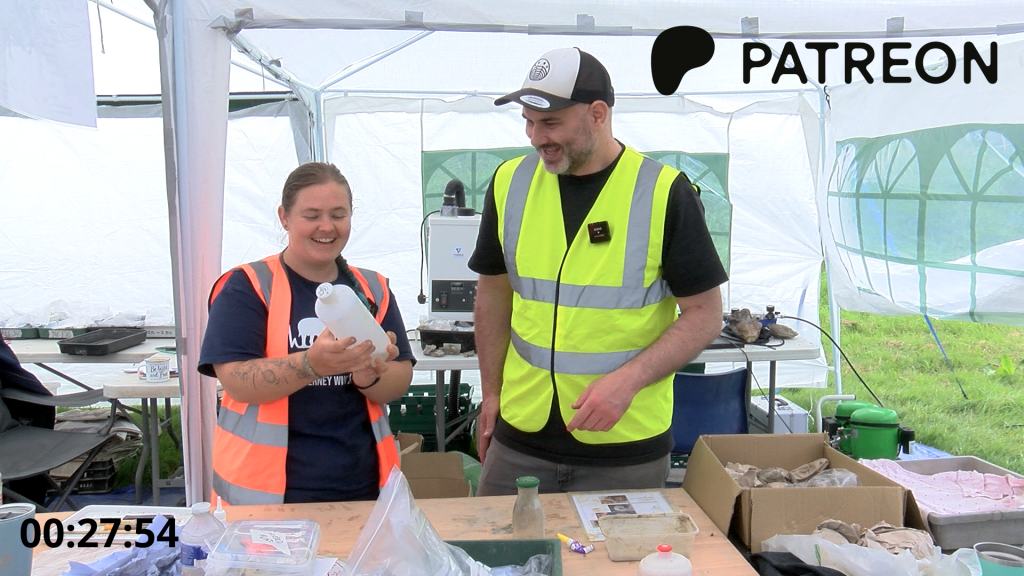
Returning to camp, we were given a full run-down of everything that goes on in the conservation tent with Conservation Team Leader Alison Park. We also discuss what to do with some of the ammonites we found when we first visited the site.
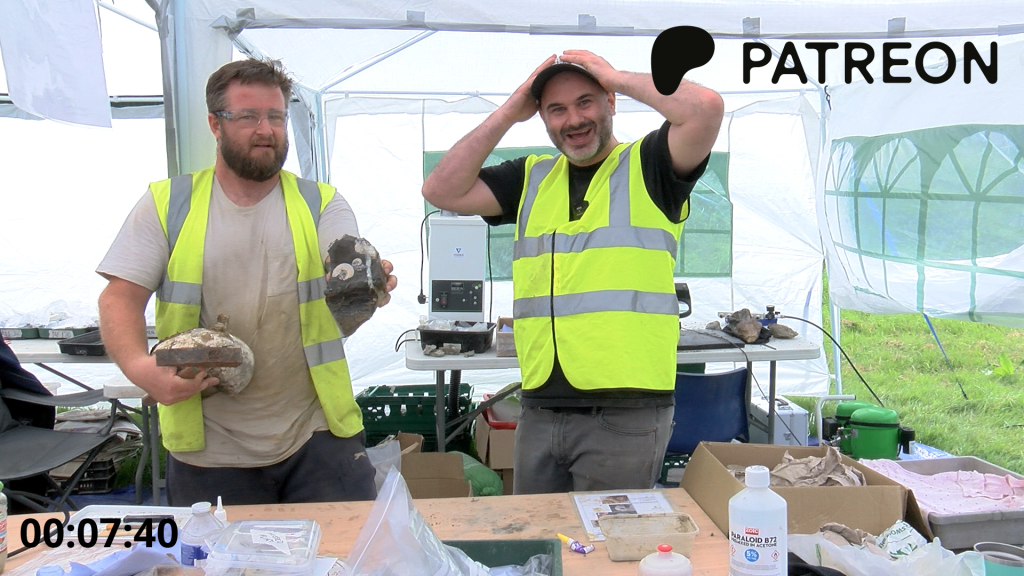
We kept the cameras rolling after the last video and had an unplanned look at a very large ammonite with Mark Kemp. Would it be worth taking a hammer to it and risking what was already there?
Yes. The answer was a massive yes.
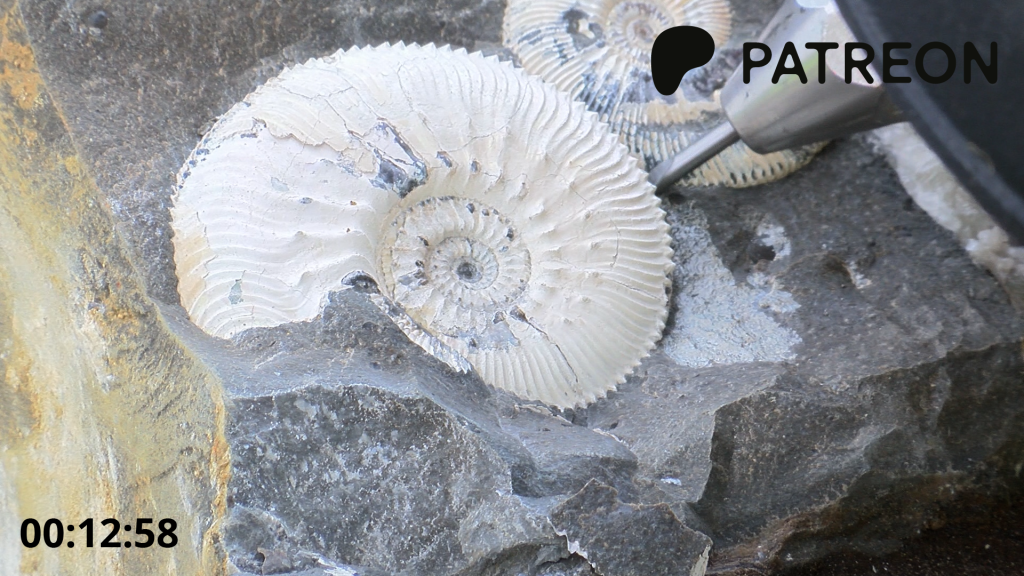
Mark then helped us prepare some of the ammonites we have collected throughout our time at Cerney Wick. Remember, our Patreon backers have an exceptionally good chance to win one of the ammonites we collected!
Reflections
All too soon the dig was over and whilst everyone was weary after weeks of effort, nobody really wanted things to end. Despite that, there was a sense of celebration and a recognition of a job well done. We felt this was an important time to look back on the successes and challenges of the 2024 field season.
Following the 2024 dig, an exhibition was held at the Corinium Museum (Cirencester, England) in which some of the best material was displayed. Hosting the fossils within a museum so close to Cerney Wick allowed local people better access to the discoveries made on their doorstep.
This exhibition also allows us to look back at some of the most interesting fossils to have been discovered this year, including some of the specimens that we saw be extracted, conserved and prepared.
Jurassic finds
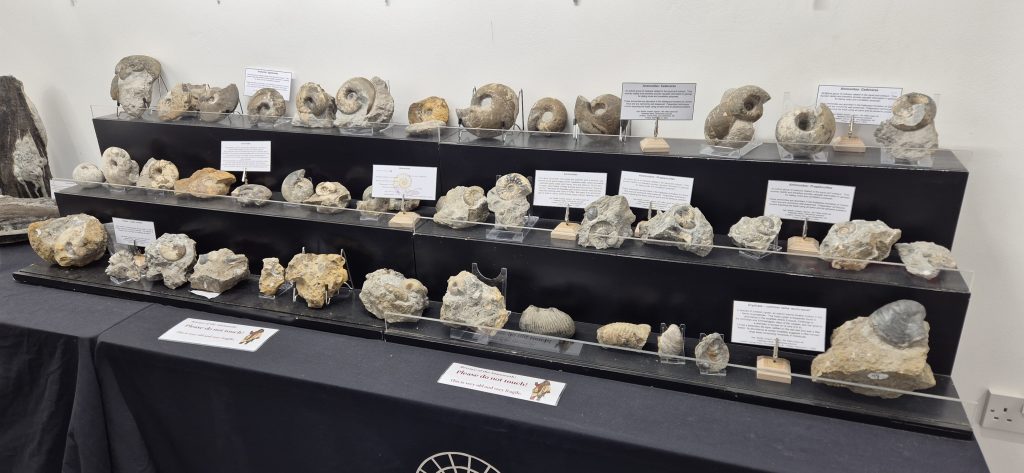
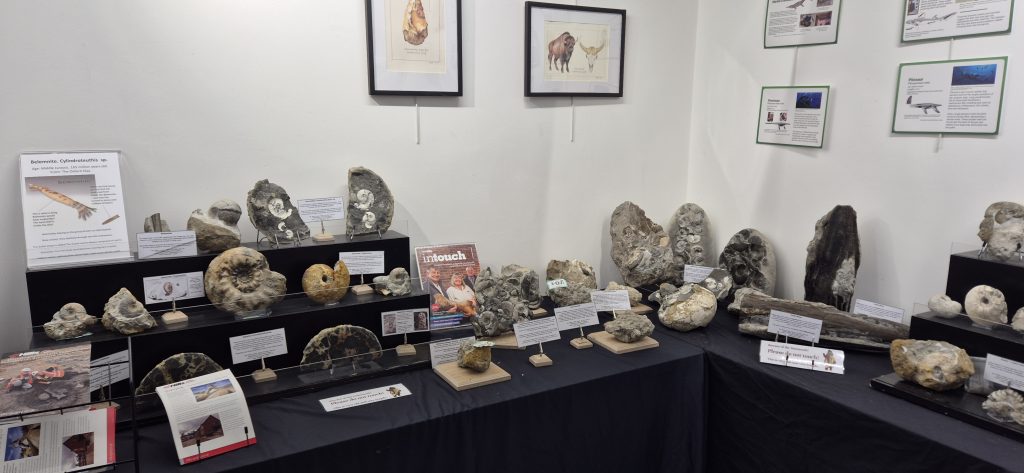
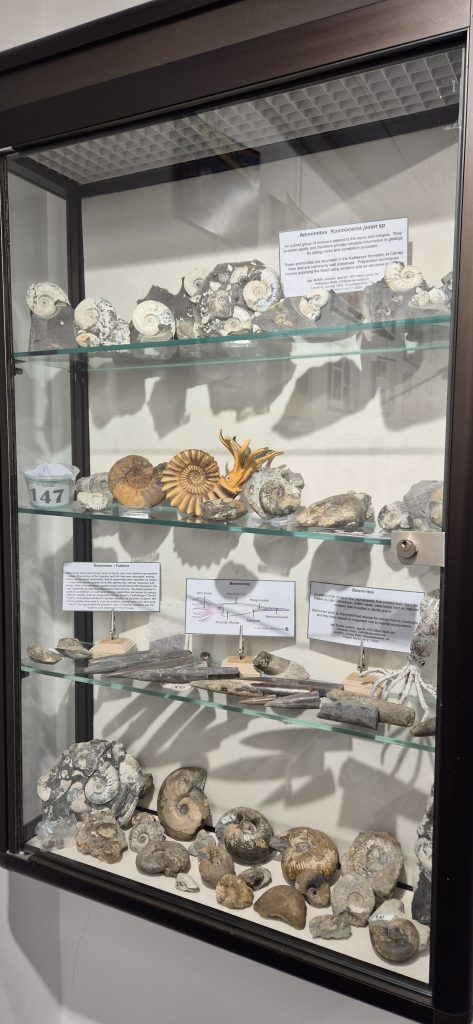
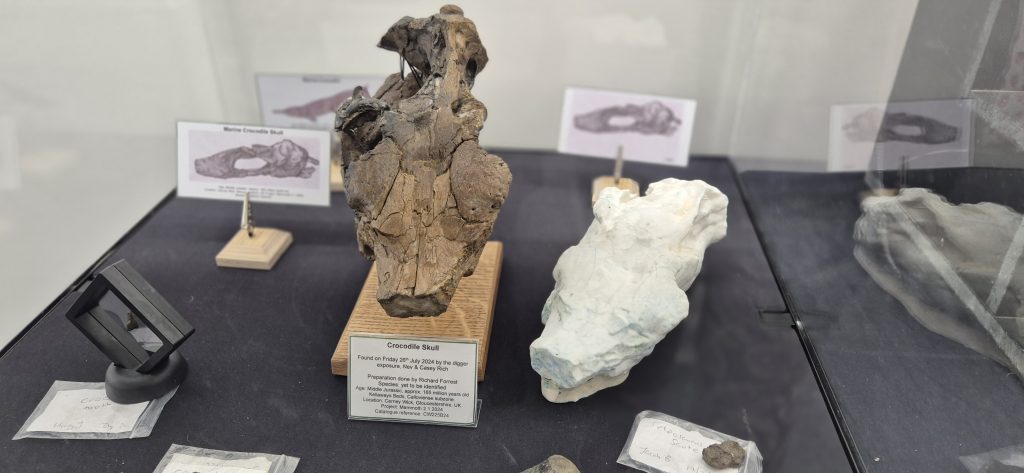
Pleistocene finds
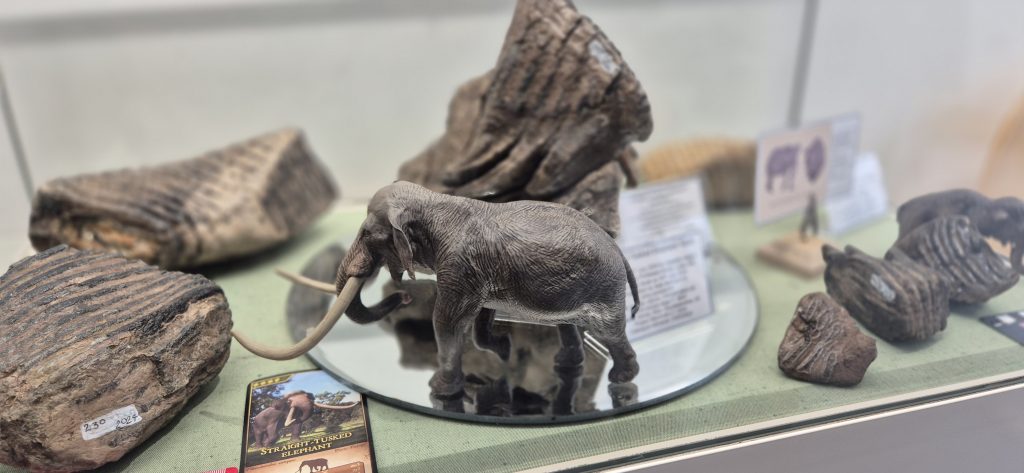
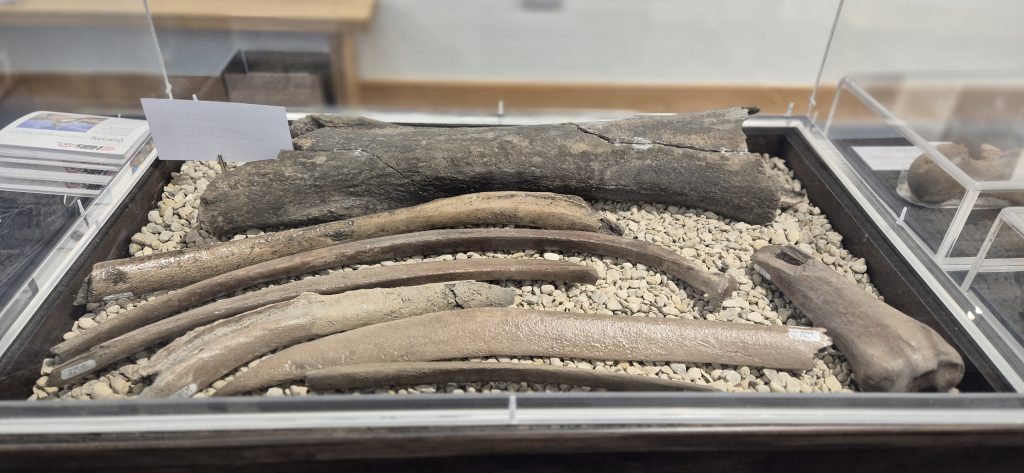
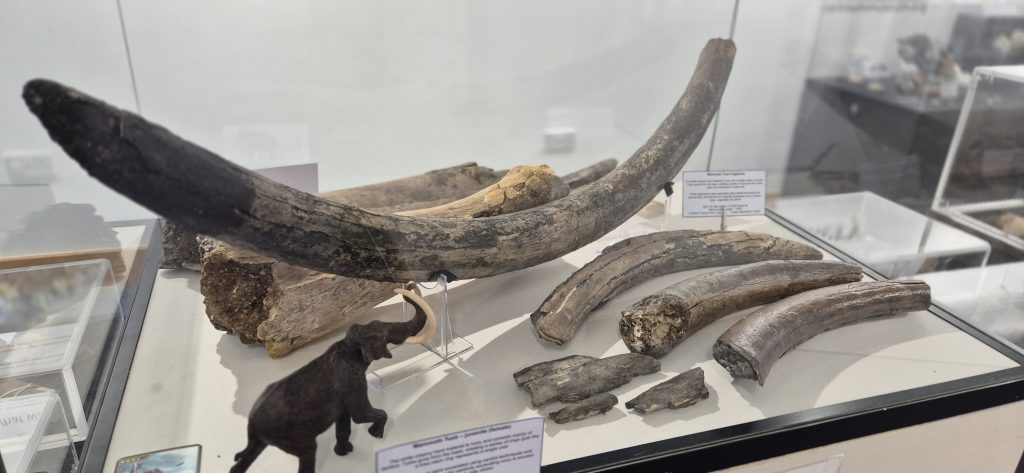
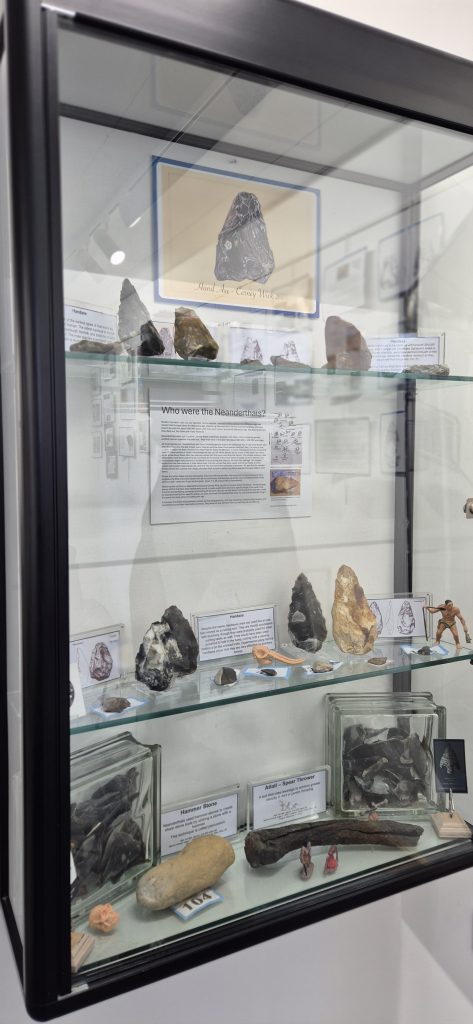
Other Outputs
We will try to keep this section up to date with news and outputs from Cerney Wick. What is next for this collection of fossils?
Hopefully we might even be able to return in 2025!
Acknowledgements: We’d like to thank Sally and Neville Hollingworth for their help with putting this series together and for accommodating us in the field. We recognise Hills Quarry Products for making their site so accessible for research and science communication. Thanks to all the volunteers who have contributed to the multimedia in this series and especially to Laura Hobbs who has provided assistance throughout. Finally, thanks to all our backers on Patreon who help make projects like this possible.

